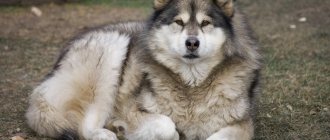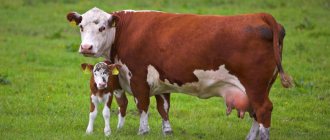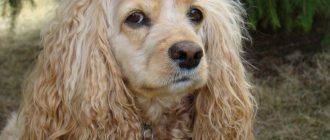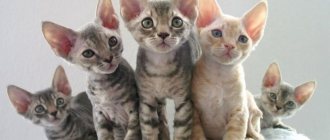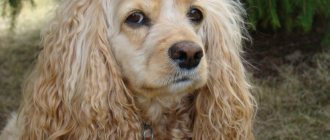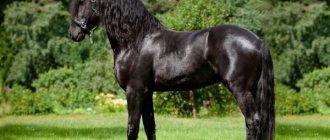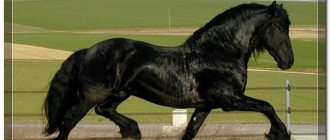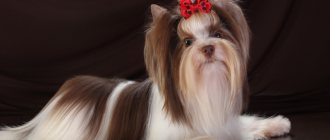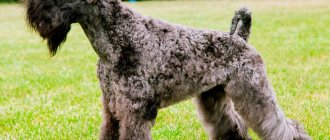Peterbalds, or St. Petersburg Sphynxes, were bred relatively recently, but have already achieved a certain popularity among lovers of the Sphynx breed. The basic standards for Peterbald were adopted in 1996. Among well-known circles, fame about the new breed quickly spread, which allowed the Peterbald to occupy a certain level of leadership among the most popular lists of breeds.
This cat breed is both similar to the original Sphynx and completely different from it.
The St. Petersburg Sphynx is characterized by grace and elegance, which are uniquely intertwined in one breed. There are definitely similarities between the Oriental and the Don Sphynx, which makes this breed an interweaving of playfulness, disposition, curiosity and a unique character in one bottle.
Character of the Peterbald cat breed
The character of Peterbalds is actually exactly the same as that of all Sphynxes. They are very kind and friendly, able to easily find a common language with other inhabitants of the house.
They are very devoted to their owners, but get along well with all family members; they treat guests with suspicion, but they soon get used to it and treat them the same way as everyone else in the house.
- They do not like to be alone, so they follow their owner almost everywhere, require a lot of attention, but are not intrusive.
- If they see that the owner is busy, they will wait patiently until he has free time for them.
- They love to play; if there are other pets at home, they will try to flirt with them.
Education and physical activity
The Peterbald is a highly intelligent and quick-witted cat that is easy to train. If desired, he can be taught simple commands and fetching. True, it is better to conduct classes in the form of a game, without forcing the pet to do anything against its will.
St. Petersburg Sphynxes are quite active and love to jump. They climb tall cabinets without problems, but do not have a habit of destruction. So that the Peterbald can throw out the accumulated energy, he is equipped with a play complex and is periodically asked to run after a laser pointer.
Cohabitation
Although they get along well with virtually any other pet, some precautions need to be taken.
- For example, at the beginning of acquaintance, it is better to keep the cat away from larger animals, especially dogs. This will help avoid conflict.
- The breed is slightly jealous, so if the owner devotes more time to other pets than to her, she will try to show her dissatisfaction with the change in behavior.
The way out of the situation would be to pet the cat, talk to it tenderly, and give it new toys that it can play with.
Vaccinations and antiparasitic treatment
To prevent viral and infectious diseases, the St. Petersburg Sphynx is regularly vaccinated with a complex drug that promotes the development of stable immunity:
- to rhinotracheitis;
- calcivirus;
- panleukopenia.
The first vaccination for a Peterbald kitten is given at the age of 7-8 weeks. After 4 weeks, the pet is revaccinated with the same drug, but with an anti-rabies component. In the future, the cat is vaccinated annually.
To protect the St. Petersburg Sphynx from diseases transmitted by helminths, he is systematically given appropriate medications. Antihelminthic treatment is carried out 2 times a year with mandatory repetition after 10-14 days.
Pet care
All Sphynx cats have increased thermoregulation because they lack fur. They need to generate more heat, so they spend more energy than breeds that have wool.
To replenish the energy supply, it is necessary to feed your pet with special, balanced food that will be able to saturate the animal with vitality.
There are ready-made foods on sale with increased energy value; these are the ones that are recommended to be given to your pet. In the winter season, you need to make sure that the cat has its own small warm house in which it will sleep.
- It should be taken into account that cat breeds without hair sweat, so they require more careful care.
- Their body needs to be wiped with wet wipes every day, and bathing procedures should be arranged every week using special shampoos.
- In the winter season, if you plan to transport a cat, you need to carefully wrap it in a warm towel, or put a special overall on it.
Otherwise, care is no different from other cat breeds; it is also necessary to monitor the cleanliness of the mouth and ears, the cleanliness of the eyes and nose.
Catering
We'll still have to look for gluttons like Peterbalds. Representatives of the breed are rarely picky, but usually they happily eat everything they receive from their master’s hands. This is due to the increased metabolism of these animals: high metabolism helps maintain the required body temperature. Therefore, a hungry Peterbald will freeze.
Natural products
What should be included in a cat's diet?
- Meat products (2/3 of the daily diet): beef, turkey, chicken, rabbit. There is no need to boil the meat - just pour boiling water over the piece.
- Sea fish (once a week): hake, cod, salmon, trout.
- Eggs (2-3 times a week): whole quail eggs, from chicken eggs - only the boiled yolk.
- Offal (2 times a week): hearts, kidneys, stomachs - boiled.
- Vegetables (every day): carrots, zucchini, cucumbers, green beans, pumpkin - boiled or stewed, mixed with porridge or added to meat broth.
- Fermented milk products (every other day): kefir, natural yogurt, low-fat cottage cheese, sour cream, cream.
- Porridge (every day): oatmeal, pearl barley, buckwheat, millet, boiled in water.
- Sprouted oats or special grass: place the grass next to the bowl, and the cat will nibble on it whenever it wants.
- Vegetable oil (2-3 times a week): half a teaspoon in porridge.
Kittens 1-2 months eat 6-7 times a day, 3-4 months - 4 times, from 4 to 6 - 3 times, older than six months - 2 times, like adult animals.
It is forbidden to give cats:
- Fatty meat and river fish - they cause stomach upset and are poorly digestible;
- Milk – causes diarrhea;
- Canned food, pickles, seasonings, sauces - irritate the gastric mucosa;
- Sausages, smoked meats, lard - provoke the development of tumors, disrupt metabolism, cause gastritis and cardiovascular pathologies;
- Baked goods, pasta: lead to obesity, but do not provide any benefit;
- Sweets – disrupt heart rhythm, obesity, vascular problems;
- Onions, garlic - cause anemia;
- Fruits (except apples) – cause breathing problems, kidney pathologies;
- Bones - can scratch the stomach lining, pierce it and kill the animal.
Recommended food
Ready-made industrial feeds significantly save the owner’s time. When choosing food, choose holistic, super-premium or premium food. Dry can be combined with wet, but of the same brand: Iams, Canagan, Carnilove, Arden Grange, 1st Choice.
Below are recommended premium and holistic foods. Links with the names of the food are clickable, on them you can, within our website, read the descriptions of the food and read reviews from owners of the Peterbald cat breed.
| Holistic | Holistic | Premium |
| Applaws | Power of Nature | Flatazor |
And a few more rules:
- You cannot feed your cat both natural food and industrial food. Pick one thing.
- Food is only at a comfortable temperature, as is water.
- Do not give your pet spoiled or old food.
- Separate the sleeping area and the eating area.
- Get used to the new menu gradually. If he refuses to eat solid foods, they need to be crushed.
Varieties
Considering the description of the Peterbald Sphynx breed, it is worth noting that the breed has several varieties, each with its own characteristics in care and appearance, as well as in character.
When did the history of the new St. Petersburg Sphinx begin?
As the name implies, the origin of the breed comes from the glorious city of St. Petersburg, where these graceful cats were first bred at the end of 1994. The breed is relatively young, and it was created by crossing an Oriental cat with a Don Sphynx. Only two years later, the American Cat Association TICA allocated standards for the Peterbald, in 1996.
Somewhere at the same time, the World Organization assigned the international abbreviation format PBD to the new Sphinx. A little later, the World Cat Federation WCF drew attention to the breed, which finally established the breed and its origin throughout the world.
The first mating gave rise to something new. The kittens were unusual, unusually playful, and their appearance and color immediately attracted the attention of breeders. It was these kittens that became the founders of the entire Peterbald breed, and the names of these cats were Mandarin, Muscat, Nocturne and Sissy.
Today, experiments with the original type of Peterbald do not stop. Felinologists cross Peters with various breeds, such as the Siamese or the Balinese cat, which produces interesting new breed results.
If you literally translate the breed as it is, then from English you get the funny phrase “Peter the Bald.” The name of the breed itself is attributed to the name of Peter the Great.
Flock
This variety lacks mustaches and eyebrows, but they have a small coat of fur that does not exceed 2 mm.
The Peterbald with wool is also very popular; caring for it is a little easier, because almost the entire body is covered with a thin layer of hair.
Main characteristics
The main distinguishing feature of the Peterbald breed is its hairless, compact, somewhat rectangular body with a wide chest.
The Peterbald's head tapers towards the nose. The forehead is flat - forms a straight line in profile.
There is no transition from the muzzle to the skull.
The eyes are large and almond-shaped. The nose is rounded, does not protrude forward and is not set back.
The wedge shape can be seen throughout the entire shape of the skull and the contour of the ears. The narrowest part - the nose begins to widen, moving into the cheekbones, and then into the outer edge of the ears.
The ears themselves are very large and widely spaced on the skull. This is what forms the wedge shape of the head. The tips of the ears are strongly rounded, which, together with the rounded eyes, gives the cat a soft appearance.
The Peterbald's body is muscular and has a distinctly wide, wedge-shaped chest.
The toes are elongated, which further creates an image of grace and elegance.
Straight-haired
The appearance of this cat fully reflects its ancestors.
- The physique is very close to an oriental cat, and she also does not have the baldness gene, which others inherited from the Don variety of the Sphynx.
- Caring for this breed is actually no different from others that have fur.
The photo of a Peterbald cat shows that in addition to the main varieties, there can also be intermediate varieties that receive a double name, for example, flock point, etc. Regardless of the species, their physical characteristics and health are the same.
Diseases
Peterbalds live about 13-15 years. But there are a number of factors that negatively affect their health and life expectancy. They should be remembered.
Firstly, these are direct rays of the sun. Burns form instantly on the Peterbald's delicate skin, so take care of it.
Secondly, Peterbald skin is prone to acne and various types of irritation. The means at hand will help you cope with it, for example, a fresh decoction of chamomile. It is not uncommon for Peterbalds to injure themselves while playing. If you notice a fresh scratch, immediately treat it with hydrogen peroxide.
Peterbalds have a genetic predisposition to certain diseases.
- Gingival hyperplasia: occurs frequently and is often combined with the development of purulent conjunctivitis. Quickly becomes chronic. A complete cure is impossible, but improvement is possible.
- Congenital underdevelopment of the thymus gland or kitten “falling asleep” syndrome (caused by a gene mutation). Often causes the death of the entire litter.
- Vasculitis of the skin: inflammation of the walls of blood vessels. There are several clinical manifestations. Develops due to stress or infection. With timely treatment, complete recovery is possible.
- Curvature of the caudal spine. Other anomalies are almost always present (weakness of the sphincter, dwarfism, shortening of the lower jaw).
- Inversion of the eyelids: in this case, the edge of the eyelid or eyelashes touch the eyeball. The only way to cope with the disease is through surgery, otherwise the cat will develop conjunctivitis and keratitis.
- Microphthalmos: abnormal development of the eyes. This may be blindness, decreased visual acuity, cataracts, congenital keratitis, orbital tumors, cyst formation, and the like.
- Carp bite: the lower jaw is too short. Cats adapt to their condition, but they are not allowed to be bred.
Expert opinion
Dusheba Vera Ivanovna
In 2010, she graduated from the Moscow State Academy of Veterinary Medicine named after K.I. Scriabin with honors, specializing in veterinary medicine. I regularly attend veterinary conferences, congresses, and webinars.
You cannot “mate” two completely naked animals. Unfortunately, it has already been proven that kittens are almost always born with serious pathologies.
Breed cost
Like most species of sphinxes, they participate in various kinds of competitions and exhibitions. The price of a Peterbald varies greatly depending on its external characteristics.
There is a whole list of congenital defects in appearance, due to which a kitten is disqualified from further breeding of the breed, including:
- Small or short ears
- Incorrect ear placement
- Round eye shape
- Physically weak body
- Undershot less than 2 mm
- Short and/or curled tail
Kittens that have any external features that do not meet breed standards are sold much cheaper.
However, if a breeder sells such a kitten at the price of those who fully meet the standards, and at the same time claims that the peculiarity will go away with age, one cannot believe it.
These are congenital features and they do not change with age, much less disappear. They are also physically healthy, but are deprived of the opportunity to participate in the continuation of the pure breed and participation in exhibitions.
Colors
Peterbalds repeat the colors of their ancestors: Orientals and Siamese.
Siamese
Siamese color (color-point): babies are born snow-white, but gradually begin to change color.
There are several options:
- red point (tail and ears are orange, body is light, paw pads and nose are pink, eyes are blue);
- cream point (they differ from the red point color only in saturation:
- tail and ears are pale yellow);
- chocolate point (limbs, tail, ears and nose are brown, body is light);
- seal point (similar to chocolate point, but a little lighter);
- lilac point (gray nose, gray-pink paws, tail and ears);
- blue point (gray shades of the body);
- tabby point (characterized by stripes on the paws, tail and muzzle);
- Terti-point (tortoiseshell).
Oriental
Oriental colors (distinctive feature – green tint of eyes):
- tabby (black, chocolate, blue);
- bicolor (white color combined with any other primary color);
- chocolate;
- tortoiseshell (only females can have this color);
- red (bright spots or stripes on the body that fade with age);
- cream (light red);
- blue (with a silver tint);
- black.
Expert opinion
Dusheba Vera Ivanovna
In 2010, she graduated from the Moscow State Academy of Veterinary Medicine named after K.I. Scriabin with honors, specializing in veterinary medicine. I regularly attend veterinary conferences, congresses, and webinars.
Many people think that the absence of hair automatically means that it is impossible to provoke an allergic process. And this is a big mistake. The allergy-causing protein is found in both the animal’s urine and saliva, and not just in the fur. The only plus: Peterbalds are slightly less allergenic.
Photos of Peterbald cats
Breeding
You can purchase a Peterbald kitten in nurseries or by advertisement from private individuals. The price of these beautiful animals depends on the pedigree or the popularity of the nursery where you want to purchase the animal. Basically, the price for this cat is from 4,000 rubles. The appearance of the kitten depends on the appearance of its parents. For example, if you cross an Oriental Shorthair with a hairless Peterbald cat, the kittens will only be brush and flock. If both parents are Peterbalds, their children will be mostly flocked and hairless.
Possible breed defects
A congenital disease characteristic of the St. Petersburg breed is underdevelopment of the thymus gland. Without this gland, the full development of the body and the functioning of the immune system are impossible. A kitten with pathology dies immediately after birth.
Some felinologists believe that St. Petersburg sphinxes are prone to pulmonary infectious diseases. The assumption is that sphinxes are extremely difficult to tolerate rhinotracheitis.
St. Petersburg cream, blue and tortoiseshell sphinxes may have hyperplasia (overgrowth) of the gums.
Buying a kitten
St. Petersburg sphinxes are currently in moderate demand. In Western countries, this breed has not yet found wide distribution. St. Petersburg beauties have just begun to gain popularity.
In Russia now there are not so many nurseries engaged in breeding Peterbalds. The price of kittens that do not fall under the exhibition criteria ranges from 5 to 15 thousand rubles. The cost of exhibition copies can reach up to 40 thousand rubles.
Small representatives of the breed can be adopted only after they reach three months of age. If you separate a kitten from its mother earlier, it will be difficult for it, which can affect its health.
Peterbalds are suitable for a responsible owner. Kittens must be treated with special care, monitored and all required procedures carried out on time. This breed also needs a lot of affection. The owners of such cats give them love, and in return receive much more of this bright feeling.
Reviews
My family and I are the happy owners of a wonderful cat of the St. Petersburg Sphynx (or Peterbald) breed. We bought her about 9 years ago at a cat show at the age of 4 months. Ours is naked velor (flock). When I was a little girl, I didn’t even have a mustache, but now I have a few :). I have always wanted such a breed, I was especially attracted by the character and intelligence of cats, they are affectionate, smart, affectionate and love small children. That's how it turned out. This is the most tender animal in the world. You can’t imagine how much she loves us all. If someone is not at home for several hours in a row, when he meets you, he rejoices, caresses you endlessly, and follows you on your heels. When a child was born in the family, they were afraid that he might scratch or jump on the little one, so at first they kept the bedroom where the child slept closed at night. She, the poor thing, was crying under the door, my heart was breaking, but the child comes first, so what. Then they slowly began to let her in, and she never even scratched him, although he tore her as he wanted. She endured everything stoically if we didn’t intervene quickly. We, adults, could be bitten and scratched in play, but not little ones. When my husband and I went on vacation, she stayed with my mother and child in the apartment, she was very bored, ate, drank and slept, did not approach my mother to caress her, it was obvious that she was sad. When we arrived, everything returned to normal :). If you decide to get a Sphynx, be sure to take care of him, that is, for him, all these hugs and strokes are as important as food and water, seriously. Without them, the animal becomes sad and may get sick.
Moso
https://spasibovsem.ru/responses/samaya-laskovaya-koshka.html
A couple of years ago, my husband gave me a Peterbald cat. My joy knew no bounds, a small white creature with huge ears and huge blue eyes. On the very first night, priorities were set, the husband was kicked out of bed for 4 days, but after he started communicating with her he was accepted back, now the three of us sleep together) Peterbalds are a magical breed. Our girl is smart, very talkative, bright, playful, and sociable. She loves it when guests come to us, she immediately brings toys). Very patient in dealing with children, she will endure all the squeezing and manifestations of boundless love from the kids. Great breed for a family!!!
encore
https://irecommend.ru/content/lyubimyi-detenysh-foto-koshki
Firstly, of the sphinxes, the St. Petersburg sphinx is the most beautiful, graceful, a godsend for photographers. Very sociable and talkative, for those who love quiet animals - this can be considered a disadvantage. Therefore, this breed is for children, because it is very playful and for lonely people who lack communication. The most important thing is education - as you teach and show prohibitions, that’s how they will be. If you give in at least once, then you won’t be able to wean him off, for example, to climb on a table. My sphinxes do not climb, even if there is raw meat there. From a hygienic point of view, this is the most advantageous breed, because you can wash yourself as often as you do. They sweat when it's hot, the skin is oily, but this is not a problem - wipe it with a damp napkin and that's it. In terms of character and intelligence, they are between a dog and a cat - you can calmly teach them to carry out basic commands. These breeds practically do not mark; my adult cat does not know how to mark. The cat goes to the toilet, there are no problems with the trays, it all depends on how you train it. The skin is very hot, it is good to treat radiculitis and not only - they find the sore spots themselves and sit down.
AllahK
https://irecommend.ru/content/peterburgskii-sfinks-zamechatelnaya-poroda
Health
The modern St. Petersburg Sphynx has good health and a well-developed immune system. When communicating with other animals or while walking, Peterbalds can contract a dangerous viral infection. It is important to follow the vaccination schedule:
- At 8-12 weeks, a comprehensive vaccination against panleukopenia, rhinotracheitis and calcivirosis is given.
- After changing teeth, the vaccine is re-administered in combination with an anti-rabies drug.
- Every next 12 months it is worth revaccinating and deworming.
The drugs “Narvak”, “Merial” and “Intervet” are considered high-quality products. The choice should be left to the treating veterinarian and not to vaccinate yourself.
Tips for choosing a kitten
Purchasing a pet with such an unusual appearance should be especially thoughtful. If the future owner has never owned hairless animals before, then it is better to get to know them better first. Not everyone will like sticky skin with a characteristic odor. But if this does not bother you, then you can look for a proven nursery.
Of course, you should only buy an animal from reliable breeders with an excellent reputation. Otherwise, you can purchase a false Peterbald dog suffering from unpleasant genetic diseases.
“ It should be taken into account that kittens of some colors, for example, color point, are born white. Their future color can be seen on the nose, ears, paws and tail only after a week.
Most St. Petersburg cats acquire a “finished” appearance only by the age of 1.5-2 years. Therefore, it is important to look at the exterior of the baby’s parents before purchasing it.
